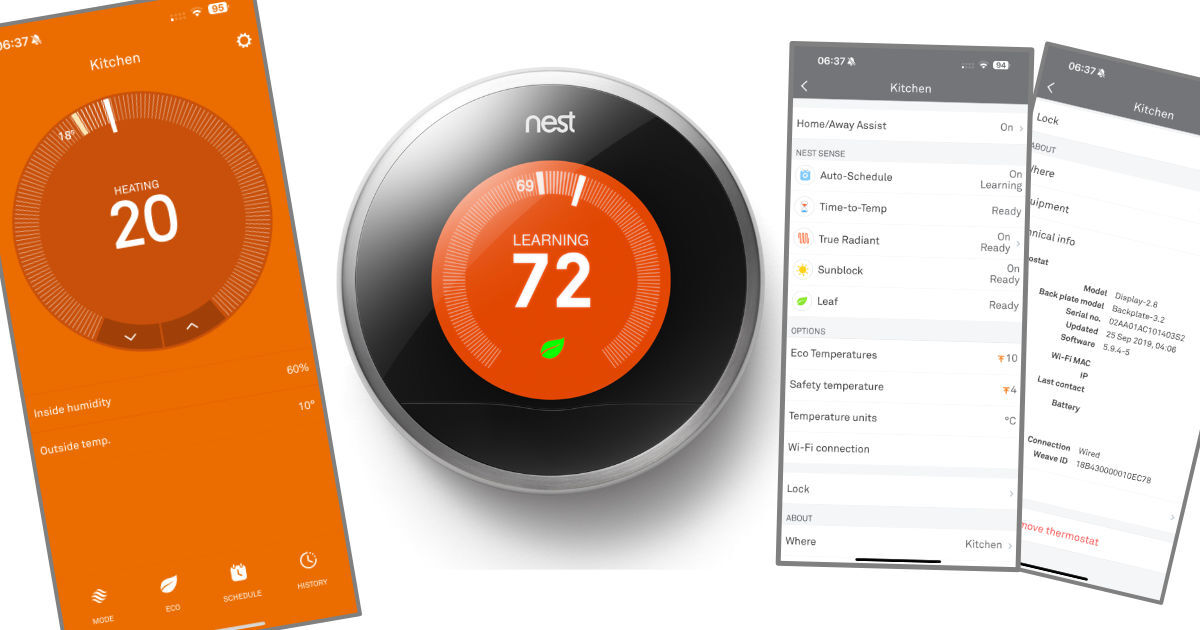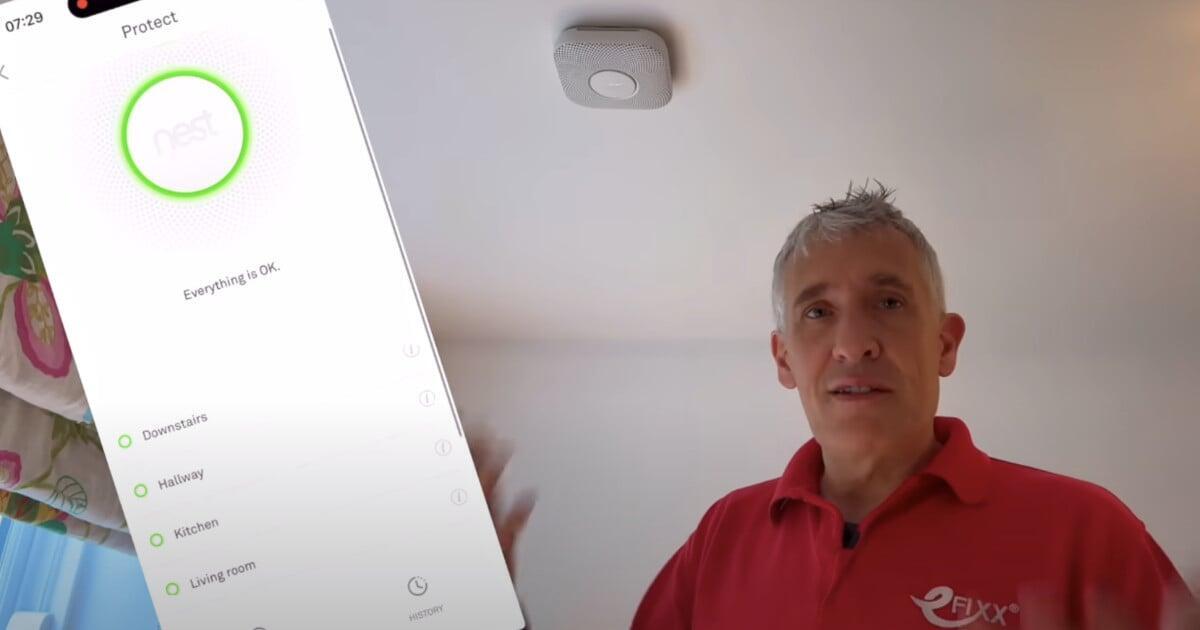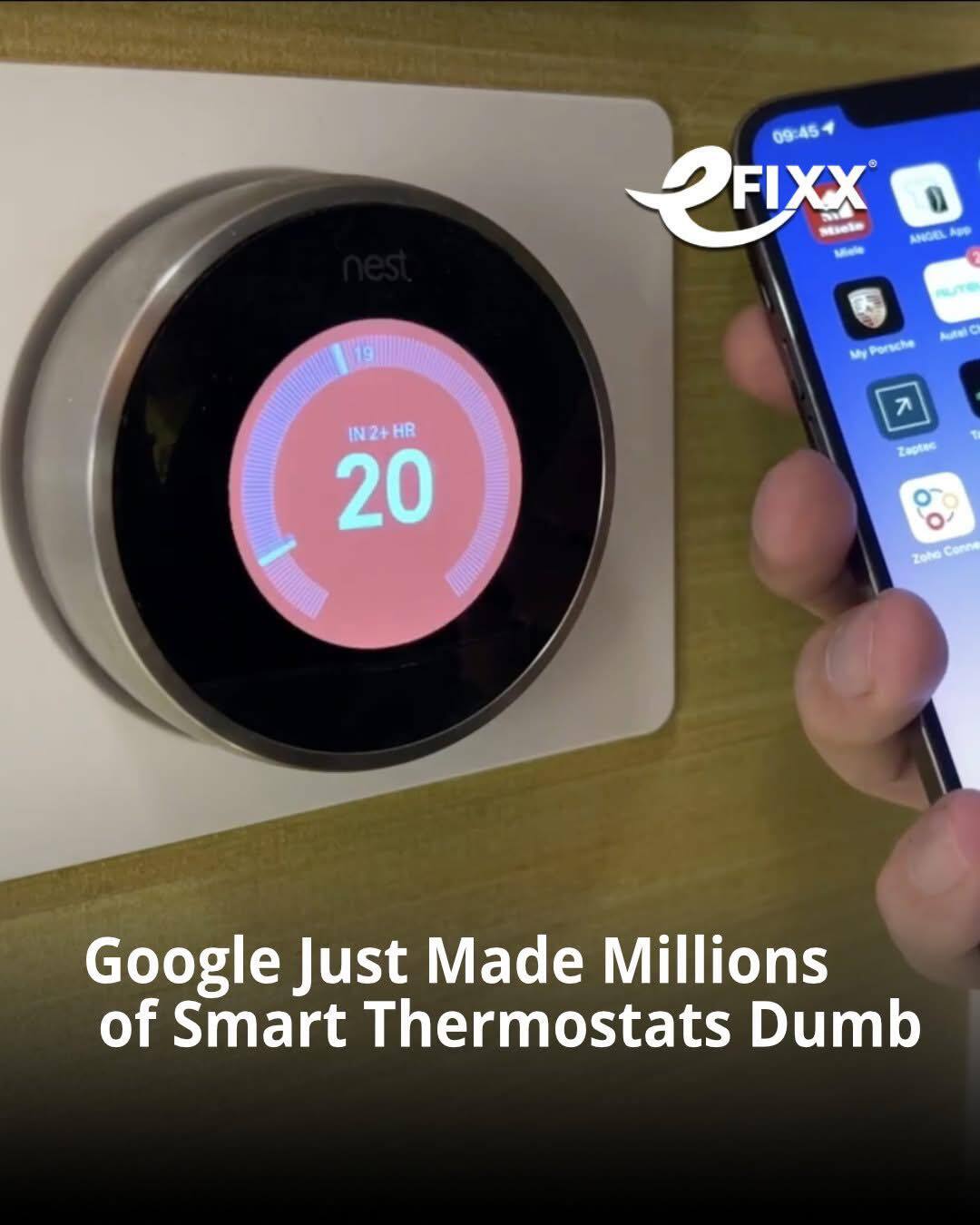Nest Users Caught Out as Google Ends Smart Thermostat Support
By Gordon Routledge
Tuesday 14th October 2025
SHARE IT
Did you wake up this morning and find your Nest thermostat has vanished from your smart home app? For many early adopters, that scenario isn’t far away.
Google has confirmed that from October 25, 2025, the first and second generation Nest Learning Thermostats will no longer connect to the Nest or Google Home apps. In plain English, that means no remote control, no voice commands, and no smart features. Your wall-mounted smart thermostat will still work — but only as a manual one.
And that’s not all. Google has also announced it’s ending production of the Nest Protect smart smoke and carbon monoxide alarm, drawing a line under one of the most recognisable smart home product ranges ever made.
Your Smart Thermostat Just Got a Lot Less Smart
Nest has officially announced the end of support for early Learning Thermostat models. Starting October 25, 2025, these devices will be unpaired and removed from the Nest and Google Home apps.
Affected users will receive an email explaining what’s happening, along with a one-time upgrade offer. The following devices are affected:
Nest Learning Thermostat (1st gen, 2011)
Nest Learning Thermostat (2nd gen, 2012)
Nest Learning Thermostat (2nd gen, Europe version, 2014)
Once support ends, users will no longer be able to:
Check thermostat status remotely
Adjust temperature or schedules via phone or tablet
Receive alerts or notifications
Use Google Assistant or third-party integrations
Run connected features such as Home/Away Assist or emergency shut-off
Link their thermostat to Nest Protect devices
All cloud and app functionality will be switched off.
The good news is that local control remains. Users can still:
Adjust temperature, schedules, and modes directly on the device
Use existing saved schedules without disruption
Access any features built into the thermostat itself
However, there will be no further software or security updates, which could affect long-term performance.
EU customers will receive an email offering 50% off the Tado° Smart Thermostat Starter Kit, which works within the Google Home ecosystem. To confirm if a device is affected, users can check their model information in the Nest or Google Home app under Your Devices.
Nest + HomeKit: The Smart Home Combo Google Never Wanted
Google Steps Back from European Heating
Google has also confirmed it will no longer develop new Nest thermostats for the European market, citing the complex and fragmented nature of heating systems across the region.
Unlike the US, where HVAC systems are largely standardised, Europe is a patchwork of boiler protocols, wiring methods and control interfaces. Compatibility with systems such as OpenTherm, relay-based control, and hybrid zoning makes development and long-term support a challenge — particularly as the market transitions towards low-carbon heating.
The rapid growth of heat pumps adds another layer of complexity. Many models now feature proprietary control logic, data logging, and demand-response capability that sit outside traditional thermostat standards.
And the regulatory environment is shifting fast. The UK Government recently announced plans for new smart appliance standards, covering devices such as heat pumps, EV chargers and solar inverters. The aim is to make these products capable of responding automatically to grid signals — helping consumers save money and balancing the national energy system.
(More details: gov.uk – New smart appliance standards will help consumers save on bills)
With those changes coming, it’s clear why Google is stepping back. Instead of trying to design a one-size-fits-all thermostat for Europe, the company is focusing on its Google Home platform, supporting specialist manufacturers such as Tado°, Hive, Drayton Wiser and Heatmiser, which already build systems tailored to regional heating standards and renewable integration.
Existing European models — including the Nest Learning Thermostat (3rd gen) and Nest Thermostat E — will remain on sale while stocks last and continue to receive security updates.
Nest Protect: The End of a Smart Safety Icon
After more than a decade of protecting homes, Google is also ending production of the Nest Protect smoke and carbon monoxide alarm. It will continue to be sold while supplies last, and existing units will keep working as normal, receiving updates through to their expiry dates.ending production of the Nest Protect smoke and carbon monoxide alarm. It will continue to be sold while supplies last, and existing units will keep working as normal, receiving updates through to their expiry dates.
Nest Protect was a genuine innovation in home safety. Before it arrived, smoke alarms were simple and often irritating. Nest Protect changed that — introducing voice alerts that pinpointed the source of danger, dual-sensor detection for both slow and fast fires, and early “Heads-Up” warnings that gave users precious time to act.
It also offered thoughtful design touches like Pathlight, softly illuminating hallways at night, and Nightly Promise, confirming at a glance that everything was functioning correctly
Google says the lessons from Nest Protect will live on through its partnership with First Alert, developing the next generation of connected home alarms for Google Home.
However, that partnership currently applies only to the US market. There are no confirmed plans or timelines for European availability, leaving a clear gap in Google’s smart safety portfolio for now.
However, that partnership currently applies only to the US market. There are no confirmed plans or timelines for European availability, leaving a clear gap in Google’s smart safety portfolio for now.
Key Takeaways for Installers
This announcement is more than just another product sunset — it’s a warning sign for customers and installers as more and more everyday appliances become “smart.”
Even global brands can withdraw cloud support, leaving perfectly functional devices stranded and disconnected from the apps they rely on. In this case, losing app access to a thermostat is inconvenient but manageable — the heating system still works.
But imagine the same scenario with an EV charger, solar inverter, or battery storage system. Losing cloud connectivity or remote control could make warranty support, scheduling, or monitoring impossible, forcing customers to replace expensive hardware simply to stay connected.
Installers should make customers aware of:
The dependence of smart devices on manufacturer cloud services
The risk of obsolescence when product support ends
The importance of local control and open communication standards such as OpenTherm or OCPP (for EV charging)
As the UK government pushes for new smart appliance standards covering devices like heat pumps, EV chargers and solar inverters, the industry will need to balance innovation with reliability. Customers will increasingly expect systems that stay smart — even when the manufacturer moves on.
SHARE IT
CURRENT THINKING
V2G: The Vicar’s Wife Drove it; Now it Runs Your House.
The term game changer gets thrown around like confetti, but with vehicle to grid (V2G) it’s deserved. Your EV is a battery on wheels. With a compatible car and the right charger, vehicle to grid (V2G) will run your home, support the grid, and might even boil the neighbour’s kettle.
TradeKart: The App Delivering Materials in 30 Minutes
It’s 3pm on a Friday, you’re mid-install and run out of the one thing you need to finish the job. Normally that’s game over - but not with TradeKart. Built for trades, it delivers tools and materials to site in 30 minutes, keeping you working, not waiting.





